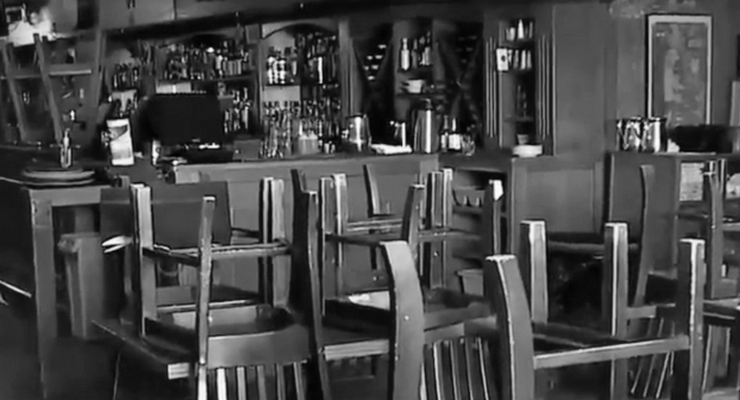
Customers may soon find themselves waiting in their cars for their restaurant tables, at least for the foreseeable future. Under new guidelines by Gov. Gavin Newsom established on Tuesday for the reopening of California restaurants, customers would be notified by cell phone when their table is ready.
The list of businesses that may qualify to reopen includes dine-in restaurants as well as outdoor museums, shopping centers and all in-store retail, and all office-based workplaces, said Newsom, but only if certain conditions are met.
Malls, strip malls, outlet malls can be open for pickup, but bars and pubs, craft distilleries, and wineries will remain closed unless they are offering meals. Alcohol can only be sold in the same transaction as food, the guidelines dictate.
The 12-page document was developed by the California Department of Public Health and CAL-OSHA, the State Department of Industrial Relations.
Pasadena restaurants have suffered devastating financial losses after “Safer at Home”orders resulted in closed dining rooms. For some, income has dropped by 90%, propped up only by curbside and delivery food service, according to published reports.
“The city should seriously consider reopening the restaurants,” longtime Pasadena restaurateur Robin Salzer said Monday. “The restaurants on takeout and curbside delivery alone are suffocating financially.”
“And if they go another month of this,” he added, “you’re going to see a catastrophic number of restaurants that are going out of business — as well as retail businesses. All you have to do is look at the storefronts.”
Paul Little, president of the Pasadena Chamber of Commerce, was cautious but optimistic regarding the possible restaurant reopenings, saying, “We are a long way from these sorts of operations in L.A. County. On the face of it, these [guidelines] seem pretty reasonable and in line with what has been discussed.
“I do appreciate the State is going to extend the to-go alcohol sales with food for the duration,” Little added. “That is very helpful. Also helpful is that protocols are spelled out pretty clearly.
“Paramount is the health, welfare and safety of workers, consumers and the public,” Little continued. “That is the most important part.”
According to the guidelines, all restaurants or qualifying business, before re-opening, must:
- Perform a detailed risk assessment and implement a site-specific protection plan
- Train employees on how to limit the spread of COVID-19, including how to screen themselves for symptoms and stay home if they have them
- Implement individual control measures and screenings
- Implement disinfecting protocols
- Implement physical distancing guidelines
Statewide, restaurants would also see dramatic differences in service as well as physical layouts.
The State guidelines covered everything from customer service to seating as well as explicitly detailed rules for employees, including everything from face coverings and hand washing rules to a ban on sharing cell phones and other electronic devices.
Among other guidelines, restaurants would be required to prioritize outdoor seating and curbside pickup, to minimize cross flow of customers in enclosed environments. Restaurants can expand outdoor seating, and alcohol offerings in those areas, if they comply with local laws and regulations.
Restaurants would also display a set of clearly visible rules for customers and restaurant personnel at the restaurant entrances, as a condition of entry.
The rules could include instructions to use hand sanitizer, maintain physical distance from other customers, avoid unnecessary touching of restaurant surfaces, contact information for the local health department, and changes to restaurant services. Whenever possible, the rules should be available digitally, include pictograms, and included on/with menus.
Guests and visitors should be screened for symptoms upon arrival, said the guideline, and asked to use hand sanitizer, and to bring and wear a face covering when not eating or drinking.
Restaurants would also be required to provide takeout, delivery, and drive through options for customers when possible, and encourage reservations to allow for time to disinfect restaurant areas before seating and serving.
The guidelines also encourage restaurants to consider allowing dine-in customers to order ahead of time to limit the amount of time spent in the establishment, said the guidelines.
Wherever possible patrons would be notified through their mobile phones when their table is ready to avoid the use of “buzzers,” which might otherwise be shared.
Restaurants would also be required to implement measures to ensure physical distancing of at least six feet between workers and customers, including the use of physical partitions, floor markings or signs to indicate to where employees and/or guests should stand.
The new regulations would also require restaurants to provide a written, worksite-specific COVID-19 prevention plan at every location, perform a comprehensive risk assessment of all work areas, and designate a person at each establishment to implement the plan.
The new guidance would not apply to concert, performance, or entertainment venues, which should remain closed until they are allowed to resume modified or full operation through a specific reopening order or guidance.
The guidelines also provide a detailed list of specific requirements for restaurants and their employees, including providing temperature and/or symptom screenings for all workers at the beginning of their shift , along with any vendors, contractors, or other workers entering the establishment.
Restaurants would also encourage workers who are sick or exhibiting symptoms of COVID-19 to stay home.
Face coverings are strongly recommended when employees are in the vicinity of others. Workers should have face coverings available and wear them when at work, in offices, or in a vehicle during work-related travel with others. Face coverings must not be shared.
Establishments must take reasonable measures, including posting signage in strategic and highly-visible locations, to remind the public that they should use face coverings and practice physical distancing while waiting for service and take-out.














 0 comments
0 comments



